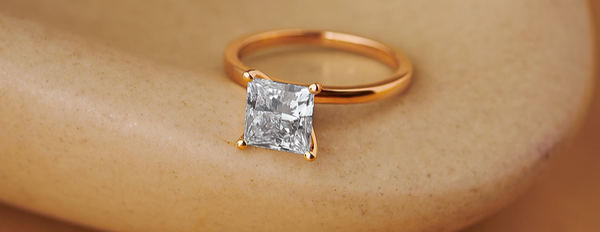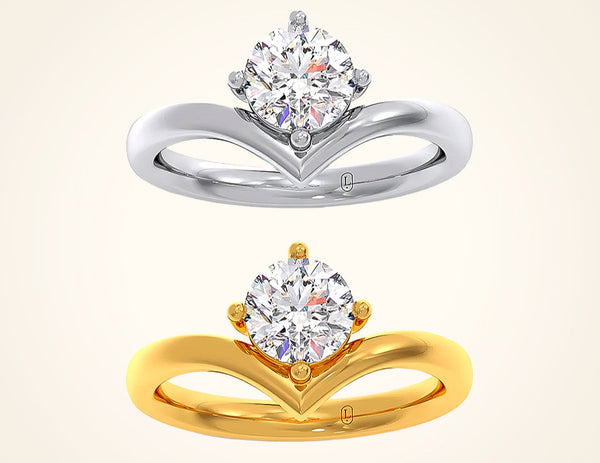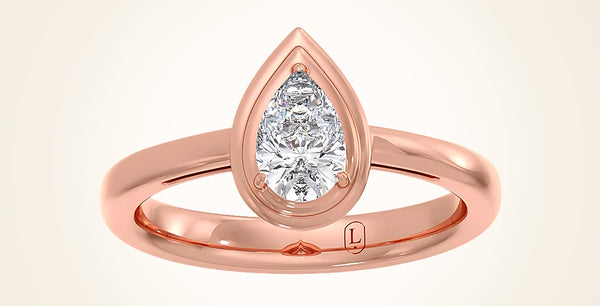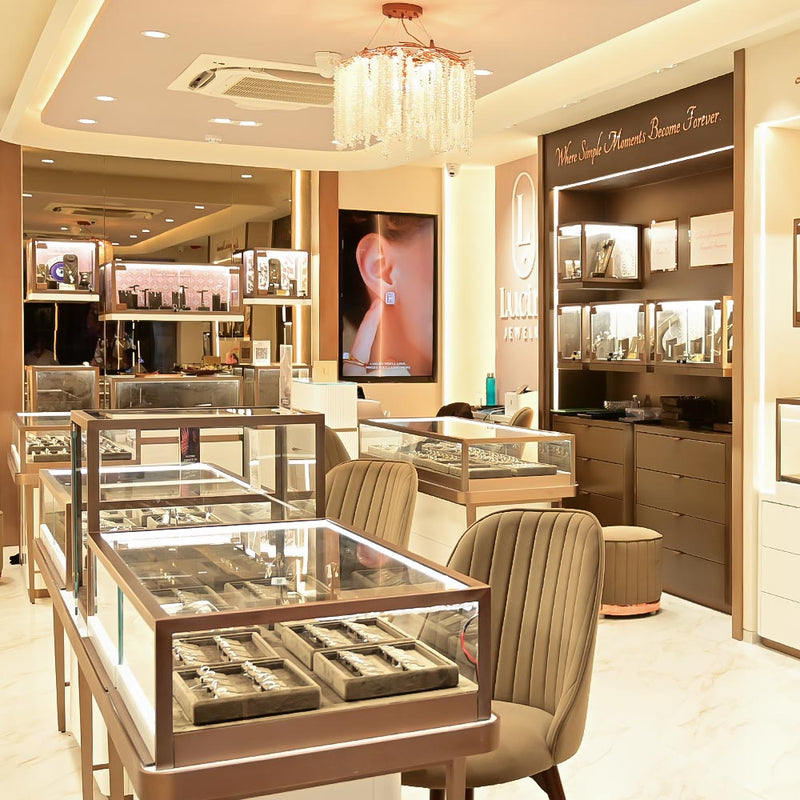The Subtle Detail That Makes All the Difference
When it’s about the Engagement Ring, we obviously focus on the big-picture details. The size and shape of the stone, the sparkle, and the overall style of the setting is all we care about. But there's one small detail that can have a surprisingly big impact on your ring’s beauty, security, and durability. We are talking about the prongs!
Also known as claws, prongs are the tiny metal arms that hold the diamond in place. While these tiny pieces may seem minor and insignificant in front of the brilliance of the center stone, the prongs can dramatically influence the overall look and longevity of your special ring. Let’s break down what you need to know to choose the perfect ones.
What Are Prongs in an Engagement Ring?

Prongs are the metal tips that hold the diamonds with a grip, usually from the widest part of the diamond, helping the diamond stay put and well-settled. Most of the classic Solitaire Rings use either four or six prongs. However, the style of the prong and the number of tips may be altered depending on the shape of the Lab Grown Diamond and the design of the ring you’re looking for. The trick is finding the right balance between function and style.
Number of Prongs: Four vs. Six (or More)
How many prongs your ring needs is the first thing to be considered, because the number of claws affects both the security and the aesthetics of the diamond. Now the question is to decide which one to go for: four, six, or more? Let’s find out!

| Four Prong Setting | Six Prong Setting |
| Offers a modern and more open look. | Provides extra protection, especially for round stones. |
| Ideal for square, princess, or cushion-cut diamonds. | Distributes pressure more evenly across the diamond. |
| Allows more light into the diamond, enhancing sparkle. | Gives a vintage or traditional feel to the ring. |
Beyond a four or six prong setting, you may also go for more prongs, which are suitable for extra-large stones. They also provide added security to fancy shapes like marquise, pear, or heart.
Prong Styles: The Details That Define the Look
Prongs come in several styles, and the one you choose can subtly shift the ring’s personality. Here are the most common:
| Round Prongs | Pointed Prongs | Flat or Tab Prongs |
| Soft and traditional. | Sharper tips that come to a defined end. | Flat metal tips that grip the diamond. |
| Offer a smooth, classic finish. | Perfect for a more dramatic or modern look. | Clean and contemporary in appearance. |
| Most flattering for vintage or timeless designs. | Often flatter angular stones best. | Less common but useful in minimalist or Bezel-accented designs. |
Metal Type: Does it Matter?
The prongs are part of the ring’s setting, so to create a more balanced and unified look, the metal of the prong should either match or complement the rest of the metal used in the setting. For example, if the setting is platinum, the claw is often platinum or white gold to create a unified look. However, you may also go for contrasting metals to create an unconventional, modern look.

Let’s figure out which one you should go for, keeping in mind your personal style:
- Platinum Prongs- The strength and durability of platinum makes it a preferred choice for prongs. Platinum stands out as an excellent material for jewelry prongs because its slower wear rate ensures stable stone retention.
- Gold Prongs- A classic and sophisticated option, a gold prong is quite popular for its charm. However, this metal may require occasional re-plating depending on whether you get yellow, white, or rose gold prongs.
No matter what metal you choose, remember that thinner claws will naturally wear down over time. Having a strong metal and thicker claws adds longevity.
Prong Placement: Shaping the Diamond’s Personality
The positioning of the claws significantly impacts both the aesthetic and functional aspects of the ring.
For example:

- Compass prongs, placed at the four points of a round diamond, give the ring a more geometric and a balanced look.
- Diagonal placement on a square stone can soften the shape and make it look more like a diamond from a deck of cards.
- Custom placements can emphasize length, such as placing prongs at the pointed ends of a marquise or pear-shaped stone to prevent chipping.
The placement should be strategic, not just for visual appeal but to protect the weakest points of the diamond.
Ring Setting based on your Lifestyle

If you are someone who leads an active lifestyle, engages in a lot of physical activities, or frequently handles things with your hands, you should consider going for rounded, smooth claws. The round claws are perfect because they minimize the risk of snagging on clothes while remaining resistant to accidental damage.
Rings like those in Lucira Jewelry’s “On The Move” collection are designed specifically for daily wear and high-energy lifestyles. So that your ring doesn’t hold you back.
However, if you’re not planning on wearing the ring every day, you can go for more decorative and delicate claws.
Prongs Maintenance: Don't Set It and Forget It
Prongs are the only part of the ring that physically touches and grips the diamond, thus, they can loosen or wear over time. So, don’t forget to get your rings checked regularly by consulting with an expert jeweler. This will ensure a perfectly set ring, allowing you to enjoy your days carefree.
Also, avoid putting a lot of pressure directly on the claws when cleaning or handling your ring. This may cause you to accidentally shift or damage them without realizing it.
Conclusion
Engagement Ring prongs might be small, but they play a powerful role in how your ring looks, feels, and lasts. Whether you’re going for modern elegance or timeless tradition, choosing the right number, style, and metal for your prong adds that subtle finishing touch that elevates the entire ring.
So take your time, ask questions, and don’t overlook the details. Because sometimes, it’s the smallest features that carry the biggest meaning, especially in a ring that is meant to last a lifetime.




